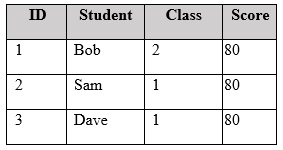Microsoft 70-779 Exam Questions
- Topic 1: Consume and Transfrom Data by Using Microsoft Excel/ Import from Data Sources
- Topic 2: Connect to and Import from Databases, Files, and Folders. Connect to Microsoft SQL
- Topic 3: Import Supported File Types/ Import from Other Excll Workboks/ Link to Data from other source
- Topic 4: Perform Data Transformations/ Design and Implement Basic and Advanced Transformations
- Topic 5: Manage Incomplete Data, Handle Data Received as Report/ Remove Unnecessary Rows
- Topic 6: Create and Optimize Data Models/ Manage Data Relationships/ Optimize Models for Reporting/ Create Automatic Relationships
- Topic 7: Create Calculated Columns, Measure and Tables/ Create DAX Queries, DAX Formulas, Excel Formulas
- Topic 8: Create Performance KPIs/ Calculate the Actual Value, Calculate the Target Value, Calculate Actual to Target Values
- Topic 9: Create Data Hierarchies, Create Business Hierarchies, Resolve Hierarchy Issues
- Topic 10: Create and Manage PivotTables/ Format PivotTables and PivotCharts, Format Calculated Measures, Filter Data
- Topic 11: Create and Manage PivotCharts/ Interact with Power BI/ Importe Excel Data from Power BI, Manipulate Excel Data in Power BI
Free Microsoft 70-779 Exam Actual Questions
Note: Premium Questions for 70-779 were last updated On 01-01-1970 (see below)
Note: This question is part of a series of questions that present the same scenario. Each question in the series contains a unique solution that might meet the stated goals. Some question sets might have more than one correct solution, while others might not have a correct solution.
After you answer a question in this section, you will NOT be able to return to it. As a result, these questions will not appear in the review screen.
You have a query named Query1 that retrieves the user information from two Excel files. One of the Excel files does not contain location information. A sample of the data retrieved by the query is shown in the following table.

You need to ensure that values in UserName are unique. The solution must ensure that the locations are retained. A sample of desired output is shown in the following table.

Solution: You use the Group By function to group the rows by UserName and you specify output columns for UserID and Location by using the Max operation.
Does this meet the goal?
You have 20 workbook queries that load 20 CSV files to a local computer.
You plan to send the workbook and the 20 CSV files to several users. The users will store the files in various location.
You need to ensure that the users can change the path to the CSV files in the queries as quickly as possible.
What should you do from Query Editor?
You have a workbook query that loads the following table

You pivot the table on the Key column by using Value as the values column, and you receive the results shown in the following table.

You need to ensure that the data appears as shown in the following table.

What should you do?
You have two queries named Client and Invoices. A sample of Client is shown in the following table.

A sample of Invoices is shown in the following table.

You need to create a new table that has the following information.

Which join kind should you use?
You have an Excel workbook that has the following two workbook queries:
A query named consultants that retrieves a table named Consultants_Contact from a Microsoft SQL Server database
A query named employees that retrieves a table named Employee_Contact from a Microsoft Azure SQL database
Both tables have the same columns.
You need to combine all the data from Consultants and Employees into one table.
Which command should you use?
Append is similar to UNION ALL in T-SQL.
http://radacad.com/append-vs-merge-in-power-bi-and-power-query
- Select Question Types you want
- Set your Desired Pass Percentage
- Allocate Time (Hours : Minutes)
- Create Multiple Practice tests with Limited Questions
- Customer Support
Currently there are no comments in this discussion, be the first to comment!